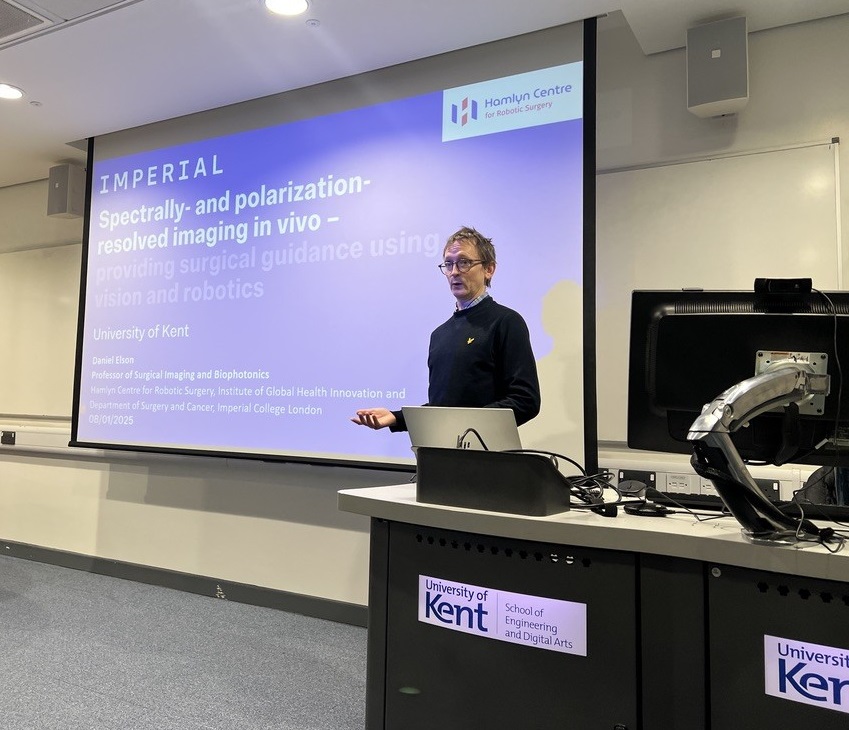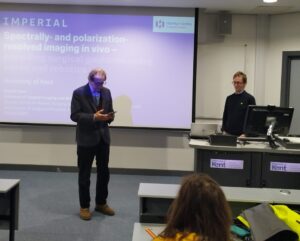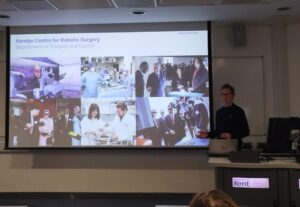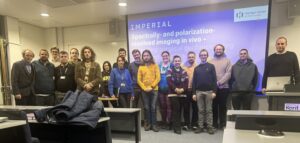
Wednesday 8th January 2025 Prof. Elson visited for the 5th time Applied Optics
Group (AOG) and delivered a presentation with the title “Spectrally- and polarization-resolved imaging in vivo – providing surgical guidance using vision and robotics” in JLT room, Jennison building.
Before and after the presentation Prof. Elson visited the AOG’s labs and had the opportunity to meet and discuss with PhD Students and Researchers about their research interests and results.
Abstract: Strategies for the acquisition of spectrally- and polarization-resolved optical data in human studies will be discussed. This includes the use of wide-field multispectral imaging, as well as spectroscopic modalities such as diffuse reflection spectroscopy and spectrally resolved fluorescence. While spectroscopy will be shown to provide high diagnostic accuracy, including in vivo, the ergonomic and visual limitations of these instruments will be shown as significant barriers to their use in surgery. The use of computer vision techniques for tracking of these devices and image-based contextualization will be presented as a potential solution. In addition, the use of commercial or custom-built surgical robotics systems can play a role in data acquisition and display. Finally, multispectral imaging data from 47 neurosurgery patients will demonstrate how combined spatial and spectral analysis can allow images to be segmented into multiple clinically-relevant classes.
Biographical sketch: Daniel Elson is Professor in the Hamlyn Centre for Robotic Surgery, Department of Surgery and Cancer and the Institute of Global Health Innovation. His group develops and clinically translates optical and photonics technologies for surgical endoscopic sensing and imaging applications, to provide minimally-invasive diagnostic guidance and to characterise different disease states during intervention. Current technologies under investigation include multispectral, polarization-resolved and fluorescence sensing/imaging, supported by computer vision and robotic guidance techniques. These devices are finding applications in minimally invasive surgery and are being actively evaluated in the operating theatre. This research has been funded by the ERC, EPSRC, MRC, TSB, CRUK, Wellcome Trust and the NIHR, and includes collaborations with industrial partners such as Karl Storz, Covidien, Cymtec and Intuitive Surgical.
A few photos from Prof. Elson presentation will follow.


